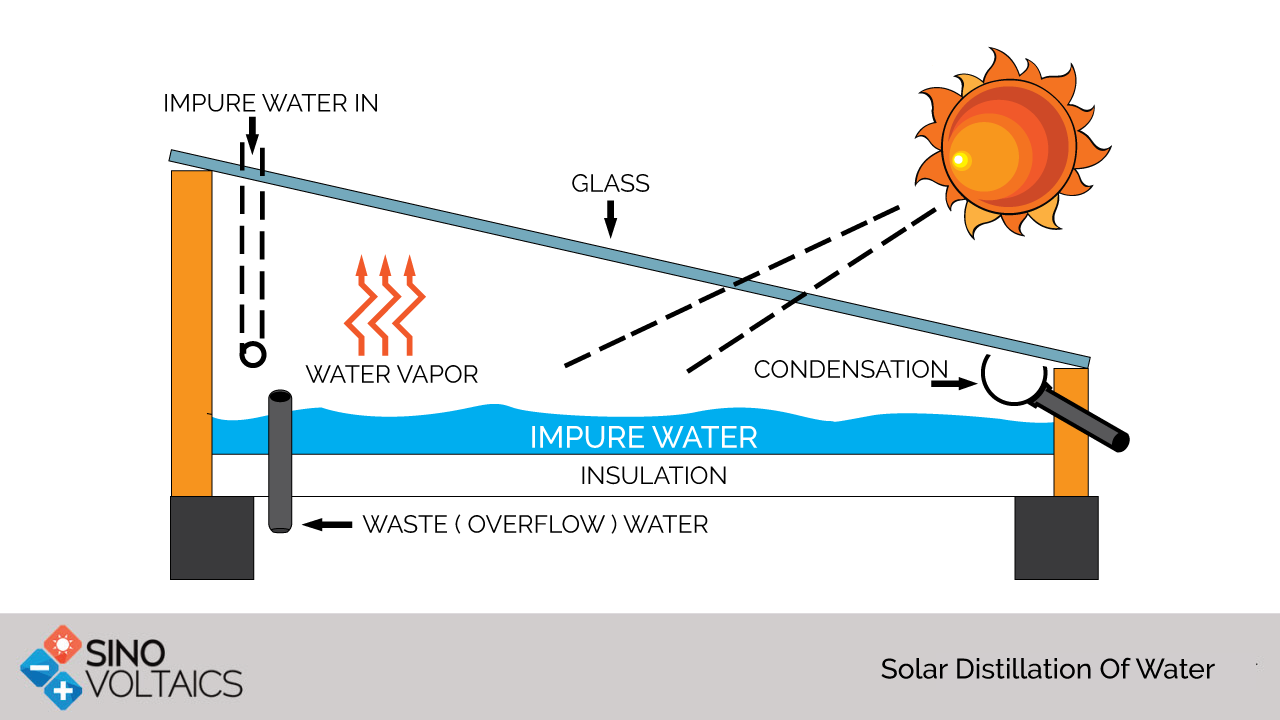Solar Distillation
What is Solar Distillation?
In the Solar distillation process solar energy is used to evaporate water and its condensate is collected within the same closed system. Unlike other forms of water purification methods like desalination, this methodology can be used to turn salt or brackish water into fresh drinking water. Solar still is the structure that houses the distillation equipment. Appropedia.org explains the solar still process as: “A place where an influent solution enters the system and the more volatile solvents leave in the effluent leaving behind the salty solute behind”. Solar distillation differs from a more energy-intensive methodology like the reverse osmosis, or simply boiling water due to its usage of ‘free’ and eco friendly solar energy.
Implementation
Solar water distillers find application mostly in remote areas where there is limited access to freshwater and centralized distribution systems. In these areas technical expertise is made use of to introduce the system and personnel in usage and maintenance of the system. An important criterion for installation of these systems is that the area should be flat and open with good access to water and sunlight. The “roof” of the system is fitted with a transparent glass cover tilted at an angle so as to catch maximum sunlight. Solar energy can access the underlying still basin by penetrating through the cover. The untreated water is collected in the still basin. Solar energy heats up this water and then evaporates and separates it from the contaminants. It is important that the material used in still basin should be able to absorb heat. Examples of such materials are leather sheet, silicon, reinforced plastic, or steel plate. The slanted cover funnels the condensed water into a pipe tube, which is attached to a storage container so it can be used for drinking water. 
Environmental Benefits
- This method offers a way to diversify the existing sources of fresh water so that the stress on local sources of supply is reduced.
- Solar is a renewable and free source of energy hence this method is a less energy intensive process.
Socioeconomic Benefits
- The operational energy costs and installation is very low.
- Provides safe drinking water hence alleviating water supply stress and health risks from contaminated drinking water.
Strengths, weaknesses, Opportunities and Threats (SWOT Analyses)
The following are the strengths, weaknesses, opportunities and threats for the solar distillation methodology.
- Strengths
- No moving parts
- Water taste is better
- Claimed weaknesses /disadvantages
- Solar distillers don’t kill bacteria and they don’t break down harmful chemicals because they don’t boil the water
- The large area tilted glass cover might be an attraction to bugs and insects
- Opportunities
- It is a low cost and low-maintenance system hence beneficial for remote communities
- These systems can be used at the household level, as well as scaled up to cater to bigger population.
- It can help in climate change goals as rural communities take this up in large numbers
- Barriers
- Rate of distillation is usually very slow
- It is difficult to procure materials required for the distiller (e.g. glass or high quality plastic) in some areas

Motivational vlog 1
on 25 Mar 2022